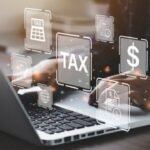Economic scarcity is a fundamental concept that silently governs our daily lives, influencing the choices we make both individually and collectively. At its core, economic scarcity refers to the limited availability of resources in comparison to the unlimited wants and needs of people. Whether it’s money, time, labor, or raw materials, scarcity forces societies and individuals to prioritize, allocate, and make tough decisions. For Americans living in a fast-paced, consumer-driven economy, understanding economic scarcity is vital because it affects everything from government policies to personal budgeting.
Economic scarcity is not just a dry academic term; it is a practical reality that shapes markets, drives innovation, and sometimes leads to conflict. In this blog, we will dive deep into the concept of economic scarcity, explore its causes, consequences, and how it impacts economic behavior in the United States. By the end, you’ll have a comprehensive understanding of this key economic principle and its relevance to our everyday decisions.
What Is Economic Scarcity and Why Does It Matter?
Economic scarcity arises because resources—such as land, labor, capital, and entrepreneurship—are finite, but human desires are infinite. This imbalance creates a situation where choices must be made about how to use resources most efficiently. As economist Paul Samuelson once stated, “Economics is the study of how people choose to use scarce resources to satisfy their unlimited wants.” This quote encapsulates the essence of economic scarcity and why economics exists as a discipline.
Scarcity compels both individuals and governments to evaluate trade-offs. For instance, when a city decides to allocate budget funds for education, it might have to cut spending in other areas like infrastructure or healthcare. On a personal level, a family may have to choose between spending on leisure or saving for future emergencies. These decisions highlight scarcity’s omnipresence in daily life.
The Causes of Economic Scarcity
Several factors contribute to economic scarcity, making it a persistent and universal challenge:
Limited Natural Resources
Natural resources like oil, water, minerals, and arable land are inherently limited. The U.S. economy depends heavily on these resources, but their scarcity can lead to price volatility and economic instability. For example, water scarcity in certain American regions affects agricultural productivity and urban growth.
Population Growth and Consumption Patterns
As the U.S. population grows, the demand for goods and services rises. Increased consumption intensifies the pressure on finite resources. Modern lifestyles and technological advancements often increase resource use per capita, which exacerbates scarcity.
Technological and Production Constraints
While technology can alleviate some scarcity by improving efficiency, it also faces limits. Not every resource can be substituted or replenished quickly. For example, rare earth metals used in electronics are scarce and challenging to mine sustainably.
Environmental Degradation
Human activity sometimes reduces the availability of resources through pollution, deforestation, and climate change. These factors diminish the quality and quantity of usable resources, increasing scarcity over time.
Economic Scarcity and Its Impact on Markets
Economic scarcity drives the basic economic problem: how to allocate limited resources to satisfy unlimited wants. This leads to the development of markets and price mechanisms. When a resource becomes scarce, its price tends to rise, signaling consumers and producers to adjust their behavior.
For example, during times of oil shortages, prices increase, encouraging conservation and investment in alternatives like electric vehicles. Conversely, if a resource is abundant, prices drop, making it more accessible. This price system helps balance supply and demand but is not always perfect, especially when externalities or monopolies distort the market.
The Role of Economic Scarcity in Policy Making
Government policies often revolve around managing economic scarcity. In the U.S., policymakers face constant challenges balancing budgets, prioritizing public goods, and addressing social inequalities—all within the constraints of scarce resources.
Policies such as taxation, subsidies, and regulations are tools to influence how resources are allocated. For example, subsidies for renewable energy aim to reduce dependence on scarce fossil fuels and promote sustainable alternatives. Welfare programs try to address scarcity of income and access among vulnerable populations.
How Individuals Experience Economic Scarcity
On a personal level, economic scarcity influences how people budget their income, invest their time, and plan for the future. Scarcity affects decision-making, often causing stress or forcing compromises. Behavioral economists study how scarcity impacts cognitive functions, showing that when resources are tight, individuals may focus narrowly on immediate needs at the expense of long-term planning.
Understanding scarcity can empower individuals to make better choices. For instance, recognizing the scarcity of time might encourage prioritizing tasks or improving productivity. Awareness of financial scarcity can lead to smarter saving and spending habits.
Exploring Economic Scarcity Through Academic Research
Research published in Google Scholar confirms the critical role scarcity plays in economic theory and practice. Studies analyze how scarcity influences consumer behavior, market dynamics, and policy outcomes. For example, a 2021 study in the Journal of Economic Perspectives highlights how scarcity mindset affects risk-taking and decision-making under uncertainty.
Furthermore, economists explore solutions to scarcity, such as technological innovation, improved resource management, and sustainable development. These insights underline the importance of combining economic theory with practical action to address scarcity challenges.
Conclusion: Economic Scarcity Shapes Our Present and Future
In conclusion, economic scarcity is an unavoidable reality that influences every facet of life in the United States and beyond. By compelling us to make choices and prioritize resources, scarcity drives economic activity, innovation, and policy decisions. Understanding this concept not only helps us grasp how economies function but also equips us to navigate personal and societal challenges more effectively.
As we face growing concerns like climate change, resource depletion, and population pressures, addressing economic scarcity with wisdom and foresight becomes crucial. Whether you are a policymaker, a business leader, or an everyday American, recognizing the power of economic scarcity can inspire smarter decisions that promote sustainability and well-being for future generations.
you may also read
Business Taxes Uncovered: Secrets Every Entrepreneur Must Know






